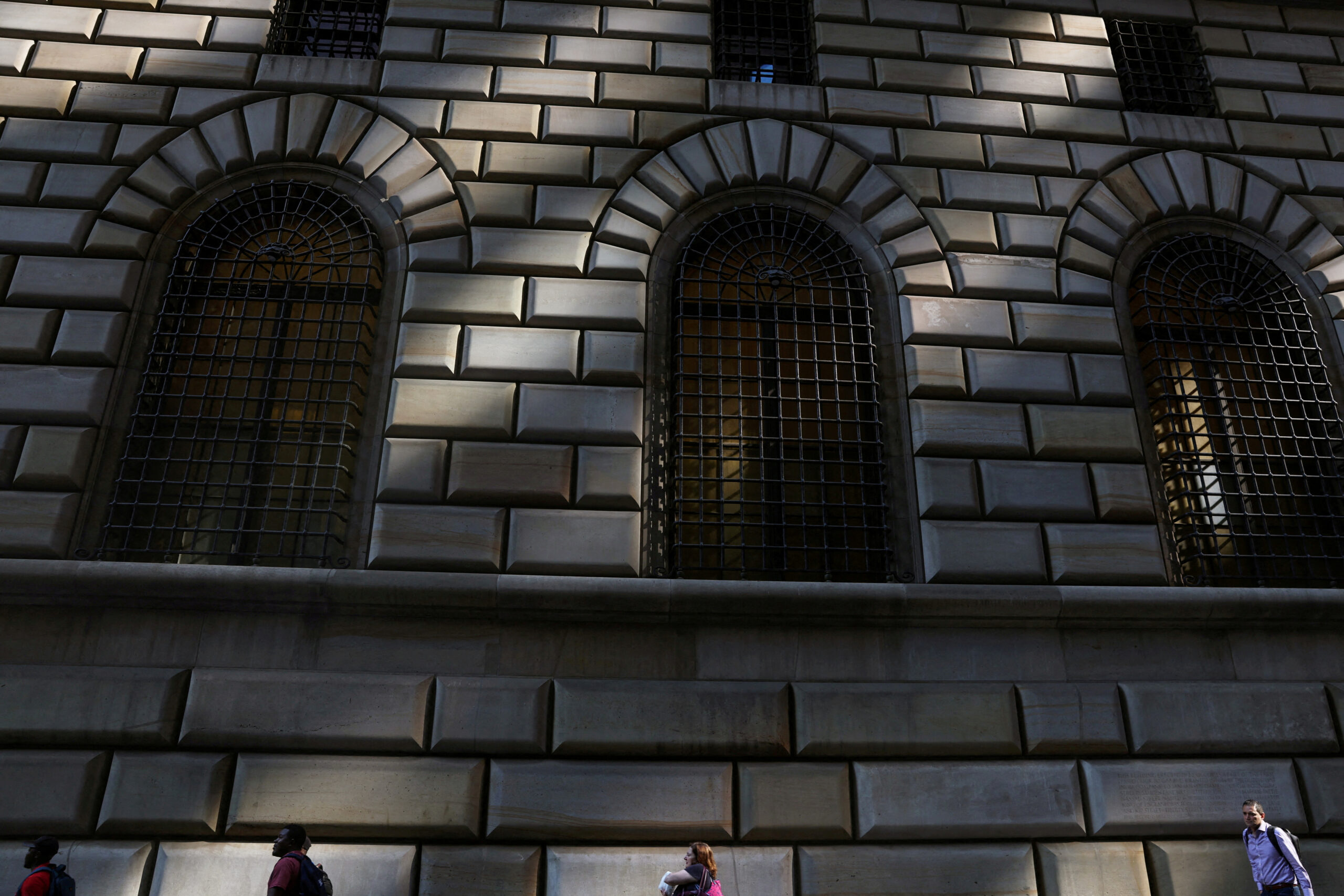Wall Street’s biggest banks expect the Federal Reserve to end the process of shrinking its balance sheet next April, holding the line relative to what they told the central bank in July.
The banks also expect the Fed’s balance sheet to bottom out at $6.4 trillion, well above the $4.2 trillion mark seen before the coronavirus pandemic struck in early 2020, according to a survey of so-called primary dealers conducted by the New York Fed ahead of the central bank’s rate-setting Federal Open Market Committee meeting, held last month. These banks serve as counterparties to Fed policy operations.
“Most dealers indicated they expected the end of balance sheet reduction to be determined by assessments of reserve levels, [overnight reverse repo] take-up, or upward pressure on money market rates relative to administered rates,” the survey said. “Some dealers suggested that macro factors pose a risk to their outlook for the end of runoff,” it added.
The release of the survey on Thursday follows by a day the U.S. central bank’s publication of its minutes of the September 17-18 FOMC meeting. In that document, officials offered little fresh guidance about the balance sheet outlook beyond noting the importance of communicating that the ongoing drawdown can continue even when officials are cutting the Fed’s interest rate target.
The latest Fed news on the balance sheet comes as market participants are still making sense of an unexpectedly turbulent end of the third quarter. The final trading day of September saw high short-term rate volatility and the first real-world use of the Fed’s Standing Repo Facility, or SRF, a liquidity tool. However, conditions have quickly returned to where they were before that.
For a little over two years, the Fed has been shrinking its holdings of Treasury and mortgage bonds as part of a process called quantitative tightening, or QT. That’s taken overall Fed holdings from a peak of $9 trillion in the summer of 2022 to the current $7.1 trillion level.
For much of the drawdown, QT has effectively tightened monetary policy in tandem with Fed rate hikes, as policymakers sought to tame high inflation levels. But with price pressures easing considerably, the Fed cut its overnight target rate by half a percentage point last month, and for some in markets, that called into question the need to press forward with more balance sheet reduction.
WATCHING MONEY MARKETS
However, Fed officials have said repeatedly that what happens with the balance sheet is separate from interest rate policy, the primary lever of monetary policy. Central bankers have also reiterated the balance sheet drawdown will continue until excessive liquidity is removed from the financial system, even as they’re not sure when that point will arrive.
“Reserves are still abundant and expected to remain so for some time,” Fed Chair Jerome Powell said after the September meeting. “What that tells you is, we’re not thinking about, about stopping runoff” even as interest rates go down.
Those expectations are being tested by money market conditions. On September 30 short-term rates were unexpectedly volatile and for the first time market participants handed over a notable amount of eligible bonds to the Fed in exchange for cash at the SRF.
While on the surface that might appear to echo events in September 2019, when the Fed ended its QT process due to interest rate volatility, in the current case the Fed never lost control of the federal funds target rate as it did back then.
The daily effective fed funds rate last week never moved off of 4.83% – well inside the current policy target range of 4.75%-5.00% – whereas in 2019 it traded above the established target range at the time. Last week, rates on general collateral open market overnight repo transactions rose 9 basis points for a day, the most in about 11 months, but have since returned to around where they were.
Most analysts view the latest turbulence as distinct from five years ago.
“Last week’s rate spike was purely a function of dealer balance sheet constraints rather than broader banking sector liquidity issues,” said analysts at Wrightson ICAP, adding that “reserve balances remained within the range of the past couple of years.”
Some market participants contend that tighter conditions in the repo market, where participants borrow and lend bonds, may drive the Fed to end QT relatively soon.
The meeting minutes showed that Fed officials and staff responsible for watching markets for signs of liquidity scarcity were keeping an eye on activity in the repo market.
Noting that market indicators pointed to still “abundant” levels of reserves, the minutes flagged higher repo market rates amid large-scale Treasury debt sales. The Fed official responsible for implementing monetary policy pointed to the connections between the repo market and the federal funds rate, which drove home “the importance of monitoring a range of indicators to assess reserve conditions and the state of money markets,” the minutes said.
(Source: ReutersReuters)
Mark Glenn is a financial journalist and breaking news reporter for ABBO News. Mark is known for his ability to deliver real-time news updates on market developments, mergers and acquisitions, corporate earnings reports, and regulatory changes, helping investors stay informed and make sound financial decisions. Read Full Bio










